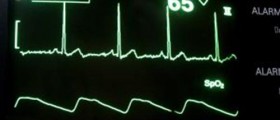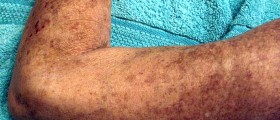
Benign paroxysmal vertigo is a condition characterized by sudden sensation that a person is spinning or that the content of his/her head is spinning. While some individuals experience brief episodes of mild dizziness, other face more complex problems and more intensive vertigo.
Benign Paroxysmal Vertigo General Info
The very symptoms or the condition develop due to specific changes in the position of the patient's head. So, they occur when a person is tipping his/her head up or down, changing position (stands up after lying and vice versa) or turning over in bed. The balance can be additionally affected while standing or walking.
Benign paroxysmal vertigo is generally not so serious medical condition. It may, however, in some individuals increase the chance of falls. This is why patients must be thoroughly examined and, if necessary, receive adequate treatment.
Benign Paroxysmal Vertigo Clinical Characteristics
The condition typically leads to dizziness, a sensation that the surrounding is spinning or moving, lightheadedness and unsteadiness. Additionally, there is loss of balance of different intensity, nausea and vomiting. Some patients may experience blurred vision and most of them also develop nystagmus.
The previously mentioned symptoms and signs usually come and go and tend not to linger more than a minute. It is also possible for a patient to experience episodes of vertigo within some time and then to be symptom-free for a long period of time. All the problems patients have to deal with are closely related to a change in the position of the head.
Benign Paroxysmal Vertigo Causes
In 50% of all patients doctors simply cannot identify the underlying cause of the condition. In other half benign paroxysmal vertigo develops as a consequence of minor to severe blow to the head, damage to the inner ear or its infection and it may be a complication of an ear surgery.
It is believed that this type of vertigo develops as a result of damage to the otolith organs, organs located in the inner ear whose function is to inform the brain about body's and head's position. These organs contain specific crystals. Once these crystals dislodge, the condition occurs.
Benign Paroxysmal Vertigo Treatment
Benign paroxysmal vertigo is treated either conservatively (canalith repositioning) or surgically.
Canalith repositioning is achieved with several rather simple maneuvers applied for positioning of the patient's head. There are two maneuvers which are applied, the Epley maneuver and the Semont maneuver. Surgery is only performed in case the mentioned maneuvers do not help. This is a so called canal plugging surgery and it has high success rate.

















Your thoughts on this
Loading...